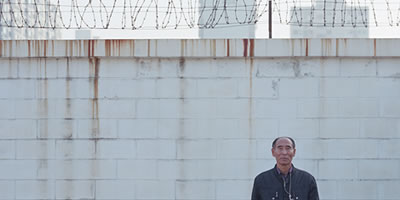Remembering Gwangju 2009–2010
Artist Statement
On May 18, 1980, students and citizens started the Uprising and Movement for Democratisation in the city of Gwangju/South Korea. The US-sponsored military dictatorship answered with bloody force. After a couple of days, however, the citzens of Gwangju suceeded in temporarily driving out the military from the city. For five days, the Gwangju people governed themselves in the liberated city, they held meetings, discussions and practised direct democracy.
Then, after only 10 days, the soldiers returned to the city and the uprising was finally brutally crushed, with the permission of the US-government. Hundreds of citizens were beaten to death in the streets or slaughtered with bajonets by paratroopers, thousands were injured or tortured in prisons. While the victims are still suffering physically and /or mentally, no perpetrator has ever been brought to justice.
9 years later, the Tiananmen massacre in Beijing shocked the world, and Tiananmen still gets prominent coverage in the Western media. But the horrible events of Gwangju are since then long forgotten by the Western world. But Gwangju was the central event which not only started the democratisation of South Korea, but made it possible. Also, the grass-roots democratic organisation of the Gwangju Uprising served as a role model for not only Asian uprisings from Burma to Tiananmen, but also the more recent Arab Spring and Occupy Wallstreet movements are directly influenced by Gwangju.
Matthias Ley 2010
